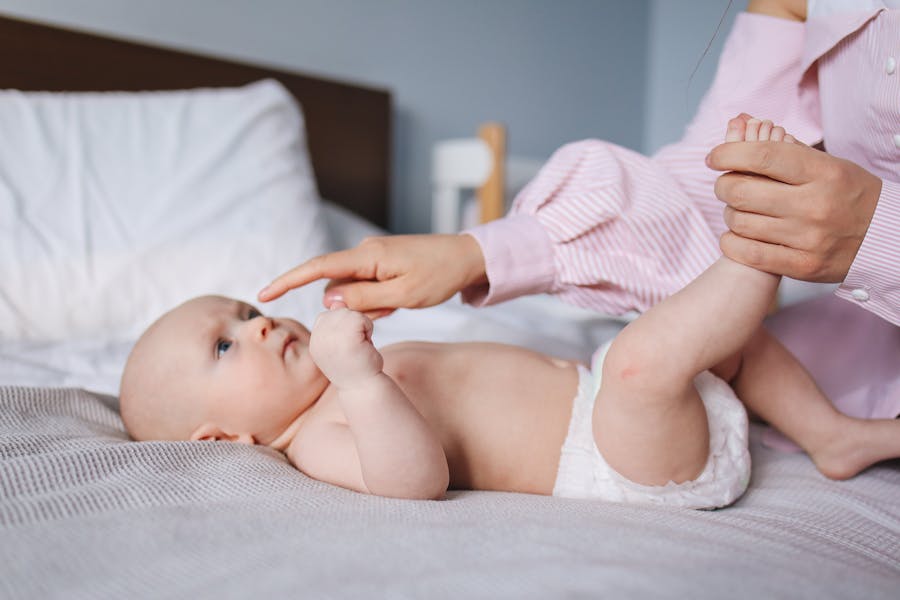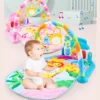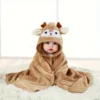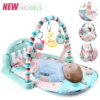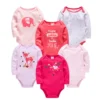As a new parent, you’re constantly navigating a sea of advice and recommendations to ensure your baby’s comfort and safety, especially when it comes to sleep. One common question often arises is whether it’s okay for a baby to sleep in just a diaper.
This topic is particularly relevant during warmer months or in hotter climates, where keeping your baby cool can be challenging. Understanding the benefits and potential risks associated with diaper-only sleep can help you make an informed decision.
In this blog, we’ll explore the advantages of letting your baby sleep in a diaper, safety considerations to consider, and practical tips for creating the ideal sleep environment. By the end, you’ll have a clearer picture of whether this simple approach could be the perfect solution for your baby’s restful nights.
Is It Okay for a Baby to Sleep in a Diaper Only?
Yes, it’s perfectly fine for a baby to sleep in just a diaper, particularly in warmer conditions. This setup can help keep the baby cool and comfortable throughout the night. However, ensuring the diaper fits well is essential to prevent leaks or discomfort. Additionally, check the baby’s skin regularly for any signs of irritation or diaper rash. If the room is air-conditioned or tends to get more relaxed at night, consider a light blanket or a sleep sack for additional warmth, ensuring it’s safe and appropriate for the baby’s age and mobility.
The Importance Of A Comfortable Sleep Environment
A comfortable sleep environment for babies is essential for their overall health, well-being, and development. A good sleep setup can significantly impact a baby’s sleep quality, mood, and growth. Here are six key points highlighting the importance of a comfortable sleep environment:
1. Temperature Regulation: Maintaining an optimal room temperature (68-72°F or 20-22°C) helps prevent overheating or chilling, which can disrupt sleep and pose health risks. Proper temperature control ensures the baby sleeps soundly and safely.
2. Safe Sleep Space: A firm mattress, fitted sheet, and a crib free of loose bedding, pillows, and toys minimize the risk of suffocation and Sudden Infant Death Syndrome (SIDS). A safe sleep environment is crucial for a baby’s safety and peace of mind for parents.
3. Noise Control: Minimizing loud or sudden noises helps babies sleep more peacefully. White noise machines or soft lullabies can create a consistent and soothing sound environment, masking disruptive noises.
4. Lighting: A dark room promotes melatonin production, a hormone that regulates sleep. Blackout curtains or shades can help create a dark sleep environment, making it easier for babies to fall and stay asleep.
5. Comfortable Bedding: Using breathable, soft, and appropriate bedding prevents skin irritation and enhances comfort. Avoiding synthetic materials and using natural fabrics like cotton can improve sleep quality.
6. Routine and Familiarity: Establishing a consistent bedtime routine and a familiar sleep environment helps babies associate certain cues with sleep time, making it easier for them to settle down and sleep longer.
Creating a comfortable sleep environment ensures babies get the rest they need for healthy development. By focusing on temperature, safety, noise control, lighting, bedding, and routine, parents can help their babies sleep better and grow healthier.
Benefits of Sleeping in a Diaper Only
Deciding how to dress a baby for sleep can be challenging, especially in warmer climates. One option many parents consider is allowing their baby to sleep in just a diaper. Here are six key benefits of this practice, explained in more detail:
1. Temperature Regulation
Babies are prone to overheating, which can be dangerous. Sleeping in a diaper only helps maintain a more relaxed body temperature, reducing the risk of overheating and Sudden Infant Death Syndrome (SIDS). Babies cannot regulate their body temperature as effectively as adults, making them more susceptible to temperature fluctuations. By dressing them in just a diaper, parents can ensure that their baby remains cool and comfortable, especially during hot summer nights or in warm climates.
Overheating is a significant concern because it can disrupt a baby’s sleep and pose health risks. By allowing your baby to sleep in a diaper only, you can create a more stable and comfortable sleep environment, helping your baby rest better and reducing the risks associated with excessive warmth.
2. Comfort and Freedom
Babies can move more freely without restrictive clothing, contributing to better sleep quality. Wiggling and stretching without tight clothing can make sleep more restful and comfortable. Babies naturally move a lot during their sleep, and having unrestricted movement can help them find comfortable positions and self-soothe more effectively.
Clothing that is too tight or made from non-breathable materials can cause discomfort and disrupt a baby’s sleep. A diaper-only approach eliminates these issues, allowing babies to enjoy a more peaceful and uninterrupted sleep. The added freedom can also promote physical development, as babies can practice stretching and moving their limbs freely.
3. Prevention of Skin Irritation
Diaper-only sleep minimizes the risk of heat rashes and skin irritations from wearing layers of clothing. This is particularly beneficial for babies with sensitive skin or those prone to rashes. Many fabrics can trap heat and moisture, leading to conditions like heat rash, which can be uncomfortable and distressing for babies.
Reducing the number of clothing layers allows the baby’s skin to breathe more easily, helping to prevent rashes and other skin irritations. This is especially important during warm weather or if your baby has skin conditions like eczema, which can be exacerbated by heat and friction from clothing.
4. Easy Monitoring
With fewer layers of clothing, it’s easier for parents to check their baby’s skin for any signs of irritation, temperature issues, or other concerns. Quick visual checks can ensure that the baby remains comfortable throughout the night. Monitoring a baby’s well-being becomes more straightforward when fewer layers are removed or adjusted.
Parents can quickly assess whether their baby is too hot or too cold and take immediate action to address any issues. This ease of monitoring helps maintain the baby’s overall health and comfort, ensuring a good night’s sleep for both the baby and the parents.
5. Simplifies Nighttime Diaper Changes
Changing diapers during the night becomes quicker and less disruptive without the need to remove and replace multiple layers of clothing. This convenience can help maintain the baby’s sleep cycle. Nighttime diaper changes can be a source of stress for both babies and parents, often resulting in fully waking the baby and making it harder for them to fall back asleep.
A diaper-only approach means you can change the diaper quickly and efficiently, minimizing disturbances. This leads to a smoother nighttime routine, helping the baby return to sleep more easily and ensuring that both the baby and parents get adequate rest.
6. Adaptability to Temperature Changes
If a baby is only wearing a diaper, adding a light blanket or adjusting room conditions in varying temperatures is easier. This flexibility helps maintain an optimal sleep environment as conditions change. For instance, if the room temperature drops during the night, you can add a light blanket without needing to wake the baby fully to dress them in additional layers.
This adaptability is crucial for maintaining a consistent and comfortable sleep environment. By making quick adjustments, parents can ensure that their baby remains comfortable regardless of how the external temperature fluctuates, leading to more consistent and restful sleep.
Overall, allowing a baby to sleep in just a diaper can provide significant benefits in terms of temperature control, comfort, skin health, and parental convenience. This simple approach can contribute to a safer and more restful sleep for both the baby and the parents. By focusing on these critical benefits, parents can make informed decisions about their baby’s sleep attire, ensuring their little one enjoys a comfortable and healthy sleep environment.
Safety Considerations for Babies Sleeping in a Diaper Only
While allowing a baby to sleep in just a diaper can offer numerous benefits, it’s crucial to consider various safety aspects to ensure their well-being. Here are some important safety considerations:
1. Room Temperature
Maintaining an optimal room temperature is essential when a baby sleeps in a diaper. Ideally, The ambient temperature should be between 68-72°F (20-22°C) to ensure the baby is neither too hot nor too cold. Using a room thermometer can help parents monitor and maintain the appropriate temperature.
2. Safe Sleep Environment
Ensuring the sleep environment is safe is paramount. This includes using a firm mattress with a fitted sheet and keeping the crib free from loose bedding, pillows, toys, and bumpers. These items can pose a suffocation risk and should be avoided. The American Academy of Pediatrics (AAP) recommends a bare crib for the safest sleep conditions.
3. Monitor for Signs of Cold
Even in warm weather, monitoring the baby for signs of being too cold is important. If the baby’s extremities (hands and feet) feel cold to the touch or if the baby appears to be shivering, additional clothing or a light blanket might be necessary. Ensuring the baby is not directly exposed to drafts from fans or air conditioning is also essential.
4. Check for Skin Irritation
Regularly check the baby’s skin for any signs of irritation or rashes. While sleeping in a diaper can only reduce the risk of heat rash, it’s still essential to ensure the diaper area remains dry and clean to prevent diaper rash. Using high-quality, breathable diapers can help minimize skin issues.
5. Avoid Direct Sunlight
If the baby’s sleep area is near a window, ensure that direct sunlight is not hitting the crib during naptime. Direct sunlight can cause the baby to overheat quickly. Blackout curtains or shades can help maintain a consistent and safe sleeping environment by blocking excessive light and heat.
6. Adjust for Nighttime Temperature Drops
Nighttime temperatures can drop significantly, even in warmer climates. Be prepared to adjust the baby’s sleeping arrangement if the room temperature falls. Keeping a light blanket or additional clothing within reach can help you quickly and easily adapt to these changes without disturbing the baby’s sleep.
Parents can create a secure and comfortable sleep setting by maintaining an optimal room temperature, ensuring a safe crib setup, monitoring for signs of cold or skin irritation, and being prepared for temperature changes.
When to Avoid Diaper-Only Sleeping
While there are benefits to allowing a baby to sleep in just a diaper, there are also situations where it may not be ideal. Here are some scenarios when it’s best to avoid diaper-only sleeping:
1. Colder Climates: In colder climates or during winter months, additional clothing is necessary to keep the baby warm. Babies can lose body heat quickly, and sleeping in just a diaper may not provide sufficient warmth, potentially leading to chilling or hypothermia. In such conditions, layering the baby in appropriate sleepwear, such as footed pajamas or sleep sacks, is crucial for maintaining a safe body temperature.
2. Air Conditioning: If the room is air-conditioned, ensure the baby is not directly exposed to cold air, which can lead to chilling. The air from air conditioning can cause significant drops in body temperature. It’s essential to set the air conditioning to a moderate temperature and, if needed, use light covers to keep the baby warm without overheating.
3. Health Conditions: Babies with certain health conditions, such as low birth weight, premature birth, or specific medical concerns, may require more layers to maintain their body temperature. These babies are often more vulnerable to temperature fluctuations and need additional protection to stay warm. Consulting with a pediatrician is essential to determine the appropriate sleep attire for babies with special health needs.
4. Nighttime Temperature Drops: Nighttime temperatures can drop significantly even in warmer climates. If you live where the temperature cools considerably at night, dressing the baby in just a diaper might not be sufficient. Preparing for these temperature changes with extra clothing or blankets can ensure the baby stays warm throughout the night.
5. Drafty or Poorly Insulated Rooms: If the baby’s sleep environment is drafty or poorly insulated, it may not be suitable for diaper-only sleeping. Drafts from windows or doors can cause the room to become cold quickly. Ensuring the room is well-insulated and free from drafts is essential for maintaining a consistent and comfortable temperature for the baby.
6. Limited Parental Monitoring: If you cannot check on the baby regularly at night, dressing the baby in additional layers may be better. Regular monitoring helps ensure the baby is not too cold or hot. If constant monitoring is not feasible, dressing the baby in light, breathable layers can provide extra warmth and peace of mind.
Considering factors like climate, room temperature, the baby’s health, and the ability to monitor the baby during the night is essential for making the right decision. By being mindful of these situations, parents can ensure their baby remains comfortable and safe, providing their little one with the best possible sleep environment.
Practical Tips for Parents
Creating a safe and comfortable sleep environment for your baby is essential. Here are practical tips for ensuring a restful and safe sleep:
- Use Lightweight Diapers: Opt for breathable, hypoallergenic diapers to keep your baby cool and comfortable and reduce the risk of rashes.
- Keep a Thermometer Handy: Use a room thermometer to maintain room temperature between 68-72°F (20-22°C), adjusting heating or cooling devices as needed.
- Regular Checks: Periodically check your baby’s neck or torso to ensure they are not too hot or cold, adjusting layers as necessary.
- Dress in Layers: Use light, breathable layers that can be added or removed easily, such as sleep sacks or wearable blankets.
- Observe and Adapt: Pay attention to your baby’s cues and behavior, adjusting their sleep attire or room environment based on their comfort.
- Create a Consistent Sleep Routine: Establish a bedtime routine with calming activities like a warm bath or reading to help your baby settle down.
- Safe Sleep Environment: To reduce the risk of SIDS, use a firm mattress with a fitted sheet and keep the crib free from loose bedding, pillows, and toys.
- Monitor Humidity Levels: Use a humidifier or dehumidifier to maintain comfortable humidity levels in the room.
- Proper Air Circulation: Ensure good air circulation without direct drafts on the baby.
- Trust Your Instincts: Adjust the sleep environment as needed and seek advice from your pediatrician if you have concerns.
Conclusion
It is generally okay for a baby to sleep in a diaper only, provided that the ambient temperature is appropriate and the sleep environment is safe. The benefits of allowing a baby to sleep in minimal clothing include better temperature regulation, increased comfort, and easier monitoring for parents. However, it is crucial to consider safety guidelines, monitor the baby’s comfort, and adapt to changing conditions. By doing so, parents can help their baby enjoy a restful and safe sleep, contributing to their overall health and well-being.
Ensuring a comfortable sleep environment for a baby involves balancing warmth, safety, and practicality. Whether letting a baby sleep in a diaper only or adding layers, the ultimate goal is to promote a healthy, safe, and comfortable sleep experience for the little one.
